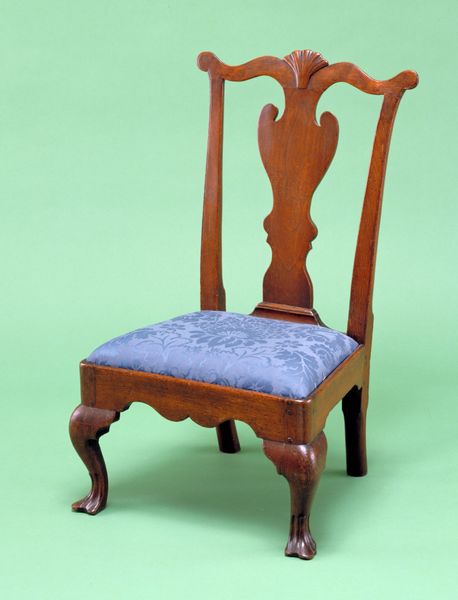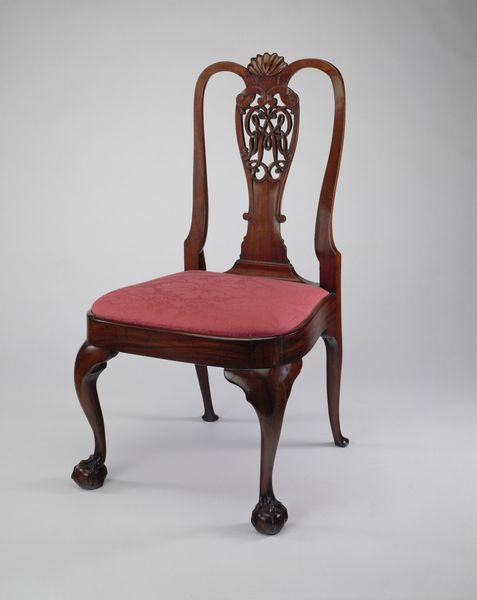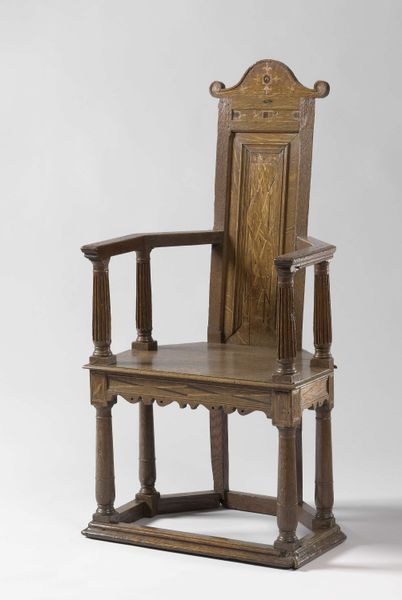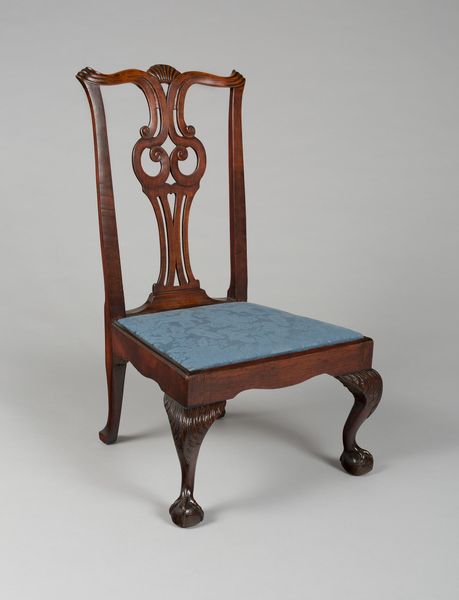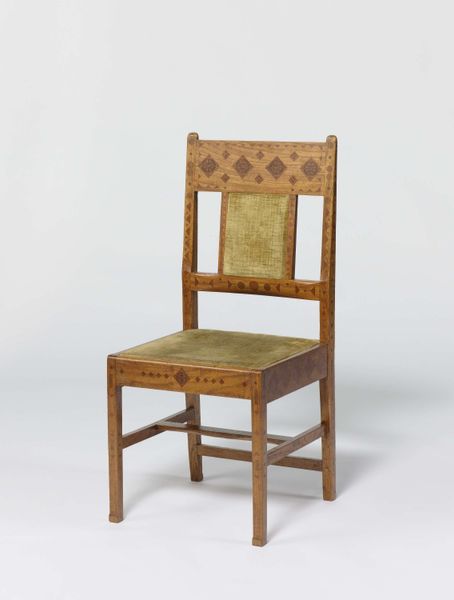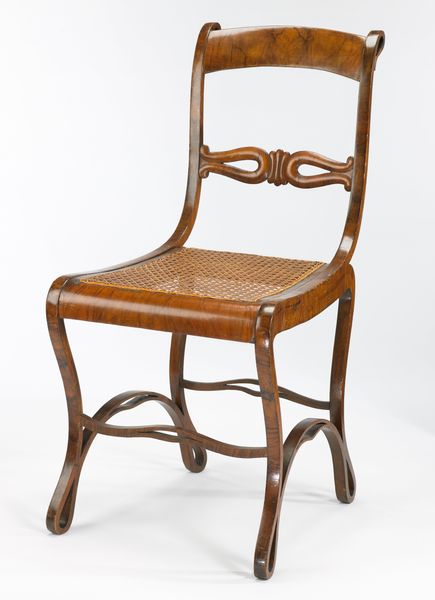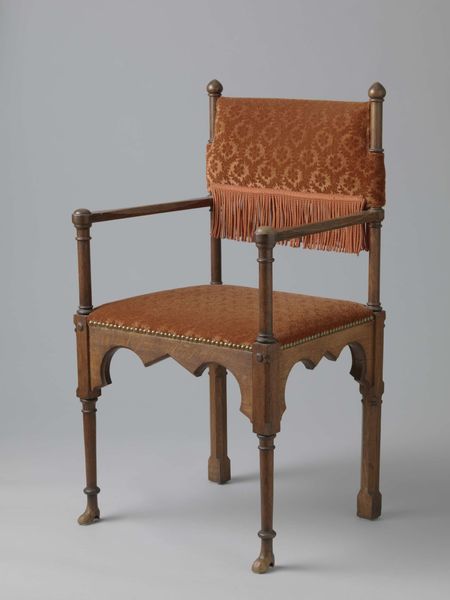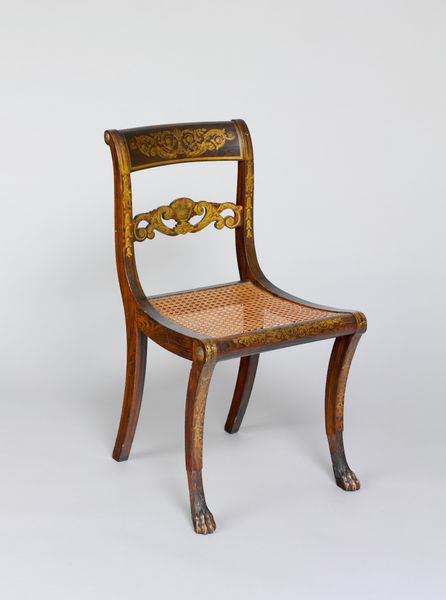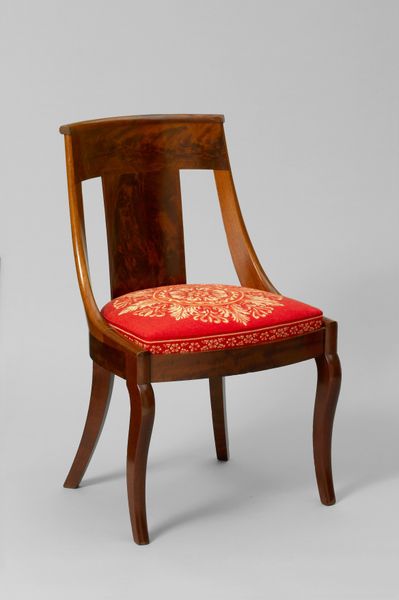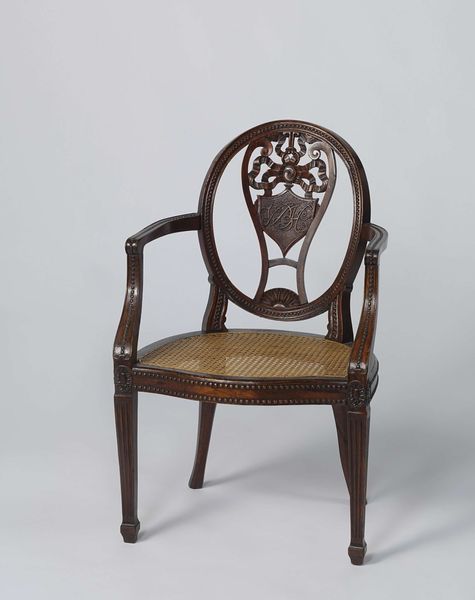
Stoel met donker gekleurde naar beneden gerichte driehoeken c. 1920 - 1930
0:00
0:00
wood
#
art-deco
#
furniture
#
geometric
#
wood
Dimensions: height 109.5 cm, width 47.5 cm, depth 60.0 cm, height 48.0 cm, weight 17 kg
Copyright: Rijks Museum: Open Domain
Curator: Let's turn our attention to this fascinating chair, "Stoel met donker gekleurde naar beneden gerichte driehoeken," made of wood sometime between 1920 and 1930 by Cornelis Jouke Blaauw. Editor: It’s… imposing. The dark triangles pointing downward give it a weighty, almost oppressive feel. Not exactly what I look for in seating. Curator: It's very much in line with Art Deco principles, using geometric shapes to convey a sense of modernity. Those dark triangles you mention play with shadows and create visual interest, perhaps reflecting the unease of the interwar period. Were these triangles related to male authority and order over female domesticity and design, in what at the time would be the space "reserved" for women. Editor: I'm more drawn to how the wood is treated. Look at the joinery, those decorative insets on the legs, and how the seat is built. The visible labor involved in its construction makes it much more compelling. I see evidence of human craft and intentional design here. What were the socioeconomic realities for a craftsman to spend this much time creating this piece? What level of access to material did they possess? Curator: That’s a key point. It's an object reflecting class and power structures in its making and consumption. The owner likely occupied a very different space than the artisan who built it. We need to remember who has historically held space, who hasn’t, and question how these pieces reinforce or challenge those norms. What would the social function have been for such a powerful chair? Who gets a seat at the table? Editor: Precisely! The contrast between the handcrafted detail and the implied wealth needed to commission it brings up questions about artistic labor versus luxurious consumption. Is this a critique of social inequality through material, or does it simply reinforce existing hierarchies? Curator: A valuable point. Thinking through the politics and ethics of design prompts important questions that art must pose. This chair is clearly more than just a functional object. Editor: Absolutely. Considering the making of things allows us a deeper look at who they were for. The craft of furniture production exposes important values in this historical context.
Comments
No comments
Be the first to comment and join the conversation on the ultimate creative platform.
